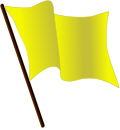Classical liberalism
| In a global context Liberalism |

|
| Ideological roots |
| Types |
| Political parties |
| Adjacent ideologies |
“”I am a Liberal, because liberalism seems to me to mean faith in the people, and confidence that they will manage their own affairs far better than those affairs are likely to be managed for them by others.
|
| —Millicent Fawcett[1] |
Classical liberalism is a loosely related collection of political positions that tend to be somewhat libertarian and liberal, though less extreme than socialism and communism. Classical liberalism emerged with the works of Adam Smith, John Locke, David Ricardo,![]() and some other philosophers. To some of the Left, classical liberalism is basically a slightly less irritating strand of conservatism. On the other hand, classical liberals are not exactly all that popular among conservatives. Or anybody, really.
and some other philosophers. To some of the Left, classical liberalism is basically a slightly less irritating strand of conservatism. On the other hand, classical liberals are not exactly all that popular among conservatives. Or anybody, really.
Political Location[edit]
Classical liberalism was initially one of the more left-leaning movements when it emerged in the 1700s.[note 1] However, communism then became a real political force, though it is widely considered to have existed since early on. As a result, classical liberals are somewhere near the center or rightist of the Political Compass.
The conservative movements of the United States were deeply influenced by classical liberal philosophy. But not all conservatives in the United States are classical liberal. (In the United States, 'liberalism' in the general sense refers to leftist progressivism and center-left social liberalism.) In particular, classical liberalism in the United States is far from what is commonly referred to as "liberalism" in the United States, and it will be called fiscal conservatism or moderate libertarianism. In areas other than the United States, "liberalism" is a concept that includes both classical liberalism and social liberalism.
Classical Liberal misused[edit]
Many people call themselves classical liberals but are not actually. These people tend to be affiliated with other, more disliked, movements, such as the Alt-Right and the Realist left. They use the term to hide their true political views, distance themselves from the rest of the movement, or to look respectable on first glance. Some good examples are:
Actual Classical Liberals[edit]
- Herbert Spencer
- John Stuart Mill — However, this man was considered a classical liberal by modern standards and a radical on the left rather than a typical classical liberal at the time.
- Milton Friedman
- Voltaire
- The Economist — However, this newspaper has both center-right (classical liberal) and center-left (social liberal) tendencies.
- Emmanuel Macron — He claims to be a social liberal, but is actually more of a libertarian, and his party, La République En Marche!, is also more of a centre-right liberal.
- The Library of Economics and Liberty
Notes[edit]
- ↑ But in the early and mid-19th century, classical liberals were center-left forces distinct from the far-left, classical radicals.
See also[edit]
- Free trade
- Liberalism
- Libertarianism — What Americans call "libertarianism" is generally more of a center-right classical liberalism.
- Liberal conservatism — It looks similar to liberalism, but it's a little different. In Europe, "liberal conservative" (moderate conservatives with classical liberal seasonings) is a concept distinct from "liberal" (center to center-right conservative liberal, center to center-left social liberal and center-right non-conservative classical liberal) and is used in a similar sense to "progressive conservatism."